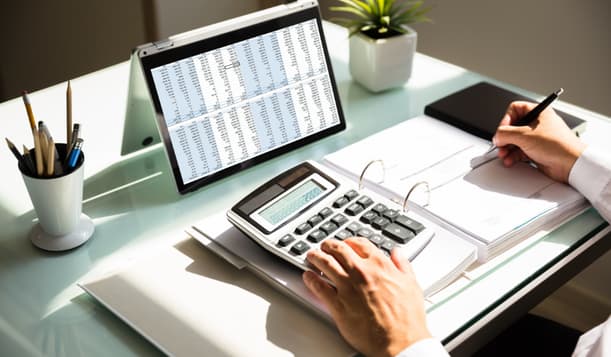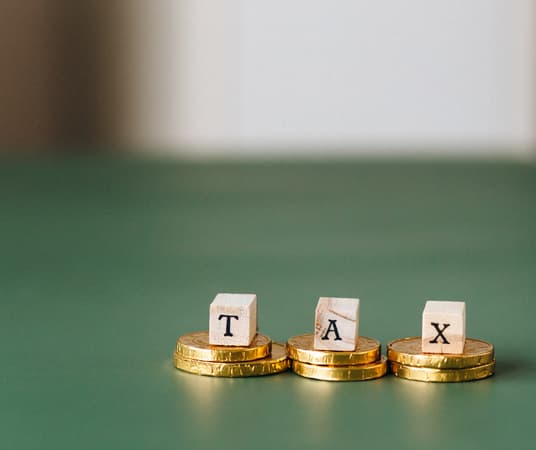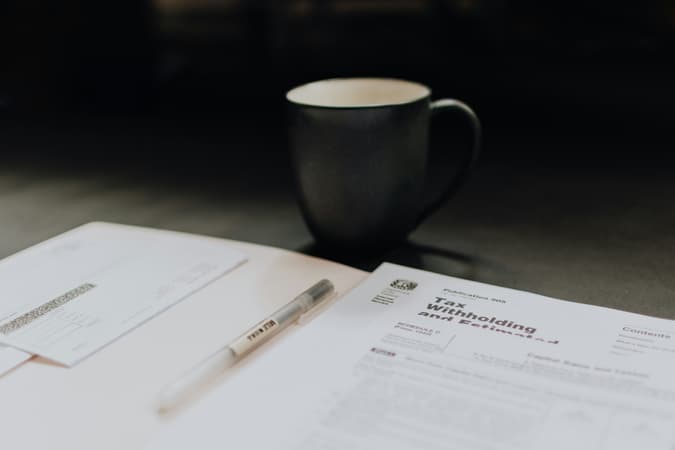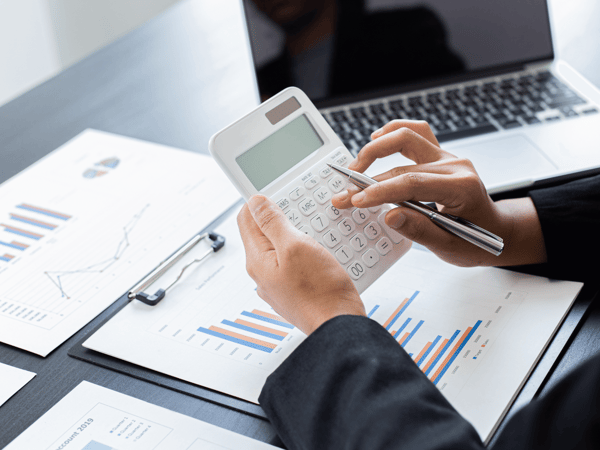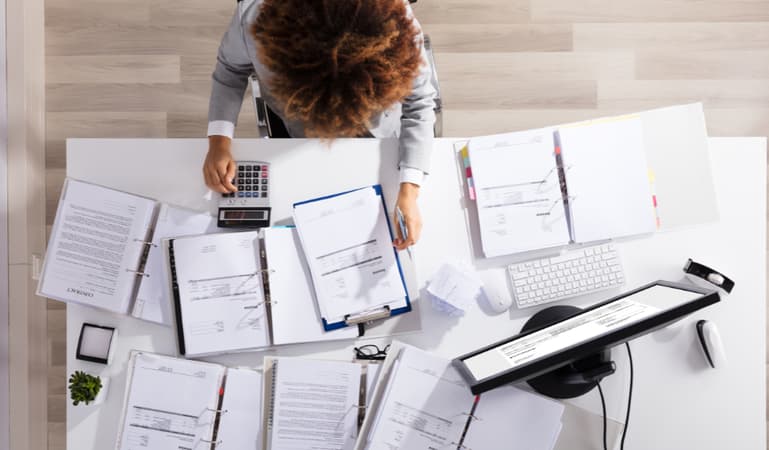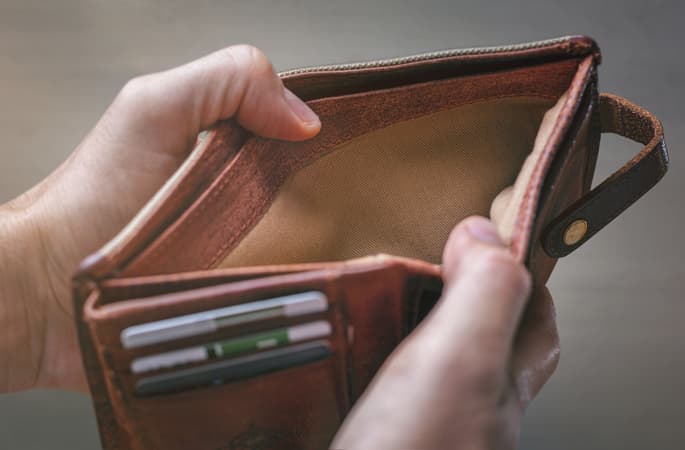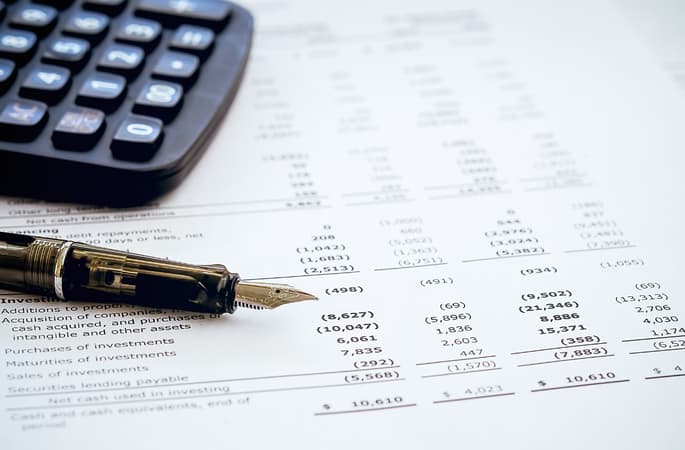Jump to a section
In the endless fog of paperwork, things can blur together. Following a paper trail requires a keen eye and a sharp sense of organisation and attention to detail.
For many small business owners, dealing with paperwork like purchase orders (POs) and invoices can be confusing. These documents can look similar, and both detail purchases and financial activities. But, they serve very different purposes and are an essential part of running a business.
What is a PO?
In business, a purchase order is the first step in buying something. It's a formal request sent from the buyer to the seller, listing the goods or services the buyer wants. After receiving a PO, the seller needs to confirm they can fulfil the order. POs are great for tracking inventory and finances, and they play a crucial role in accountability and business operations.
Rebecca says, “Your purchase order system is a crucial part of streamlining buying and will help to reduce mistakes and provide a clear record of transactions. Don’t underestimate their value in boosting efficiency.”
What information should be on a PO?
A PO should clearly set out what you’re buying, the cost, and any specific payment methods. Typically, a PO includes:
- A unique PO number
- Date of the purchase
- Details about the buyer and the products/services
- Delivery information, like addresses
“To ensure your POs are effective, include all relevant details clearly and concisely,” says Rebecca. “Set up templates for recurring orders to save time and reduce errors. Consider using digital tools or software that can automate the creation and tracking of POs."
Why is a PO important?
There are a few reasons why POs are so important:
- Simplifies invoicing: POs act as a record that makes invoicing straightforward.
- Easier tracking: POs help track products or services throughout the sales process.
- Legally binding: When a seller accepts a PO, it acts as a contract, ensuring that both parties adhere to the agreement.
How to use a PO?
After deciding to buy something, a buyer sends a PO to make sure everything is clear, avoid duplicate orders, and let the vendor confirm stock availability. Each PO should have a unique number for tracking and reference. For regular purchases, you can set up a standing purchase order to streamline repeat orders using the same PO number.
“Implement a system for assigning unique PO numbers to each order. This helps track orders efficiently and resolves any issues quickly. Train your team to follow consistent procedures when issuing POs,” Rebecca recommends.
What is an invoice?
An invoice is a document sent by the seller to the buyer, listing the goods or services provided and the amount owed. It prompts the buyer to pay for what they’ve received and confirms the completion of the purchase order’s terms.
Rebecca notes, "Invoices not only facilitate payment but also serve as essential records for cash flow management and financial analysis."
What information should be on an invoice?
Typically, an invoice includes:
- Invoice date and number
- PO number
- Amount due
- Payment due date
- Business information (name, address, contact)
- Payment terms and accepted methods
- Descriptions of items or services provided
Rebecca suggests, “Ensure your invoices are clear and professional. Include detailed descriptions of the products or services, and always refer back to the corresponding PO number. Automate your invoicing process with software to minimise human error and speed up payment collection.”
How are invoices issued?
Invoices encourage customers to pay for goods or services provided. They can be sent physically or digitally, and businesses often personalise invoices to enhance their brand. Software like Quickbooks, Xero, or Sage can make invoicing quicker and easier. It’s essential to ensure invoice details match the PO to avoid discrepancies.
“Always double-check both the PO and the invoice to confirm that the products requested match what was delivered,” says Rebecca.
What are the differences between POs and invoices?
- Issuers: Buyers issue POs to start transactions, while sellers issue invoices to request payment.
- Timing: POs begin the transaction process, and invoices conclude it.
- Content: POs often contain detailed information about the products/services, while invoices focus on payment details.
"Understanding the distinct roles of POs and invoices is crucial for financial accuracy and accountability," advises Rebecca.
What are the similarities between purchase orders and invoices?
Despite their differences, POs and invoices are closely linked. Both relate to the same goods, services, buyer, and seller. Together, they provide proof of transactions and are crucial for resolving any disputes or misunderstandings.
Why do businesses need both POs and invoices?
For busy businesses, keeping a clear paper trail is vital. POs and invoices support accountability and project a professional image that customers appreciate. They are essential for handling disputes, maintaining transparency, and managing finances efficiently.
Rebecca’s advice: “Set up a digital system to keep all POs and invoices organised and easily accessible. This helps track payments and resolves discrepancies faster. Regularly review your processes to ensure they are efficient and compliant with legal requirements.”
Manage your business better with the Capital on Tap Business Credit Card
Purchase orders and invoices make the buying process easy and eliminate potential errors. Want to make the process even easier? Pay your invoices with a Capital On Tap Business Credit Card, and enjoy accruing rewards points redeemable towards your balance!
Not only will you pay no annual fees or foreign transaction fees, you’ll be able to track your paid invoices and keep all of your payments in one place. Small business credit cards such as the Capital on Tap Business Credit Card help streamline the spending process and build positive credit history for your business and for yourself! Apply now and get a decision within minutes.
Frequently Asked Questions
Can you invoice without a purchase order?
Yes, you can have invoices with or without a purchase order. Invoices with a PO relate to a specific purchase order, while those without are called "expense invoices."
Does the purchase order need to match the invoice?
Yes, the details on a PO and an invoice should match, including currency and supplier information, to ensure accuracy and prevent errors.
Which comes first: invoice or purchase order?
The purchase order comes first to initiate the transaction, and the invoice follows once the goods or services have been delivered satisfactorily.
Can the invoice be more than the purchase order?
If an invoice is higher than the purchase order, check for additional items or services provided. If necessary, update the PO to reflect the correct amount.
What is the purchase order number (PO)?
A PO number on an invoice is a unique identifier linked to the corresponding purchase order. It helps track the order and verify that the invoice matches the original request.
What is the difference between a work order and an invoice?
A work order authorises work or service to start, while an invoice requests payment after the work is completed. Work orders focus on task details, whereas invoices emphasise financial transactions.
Is an invoice legally binding in the UK?
In the UK, an invoice is a legal document that represents a debt. However, it is not a contract by itself. It becomes legally binding when both parties agree to the terms, typically through a purchase order or contract.
This does not constitute financial advice. Please consult an accountant or financial advisor if you would like more information.
